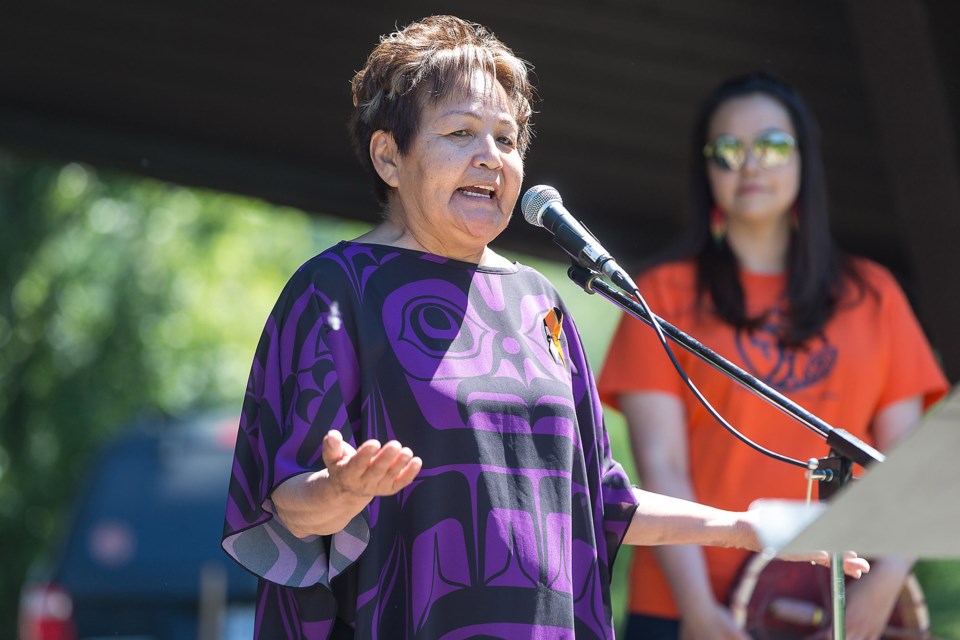It has been told through the generations that on Nov. 18, 1913, the village was burned to the ground and the people were forced to relocate to Shelley. Exactly 108 years later on Nov. 18, the destruction of the tent city began.
Lheidli T’enneh Elder Edie Frederick believes what her ancestors told her.
In the Fort George First Nations oral history, it has been told through the generations that on Nov. 18, 1913, the village was burned to the ground and the people were forced to relocate to Shelley, Frederick said.
“I tell this story every year on Nov. 18 and every year I’m the only one,” she added. “They talk about reconciliation. It would sure be nice if they would address all the wrongs they did to us. Burning of the village is part of that - it’s part of the big land swindle and if they could only address that then we don’t have to talk about it any more. We could move on and go forward from here. We just want to right all the wrongs that were done to us. It’s really sad what our ancestors had to go through.
"When they did that all the hunters had left the village to go hunting and just the elders, women and children were left and they systematically started burning one house at a time to force us out.”
Exactly 108 years later on Wednesday, Nov. 18, at Moccasin Flats, located on Lower Patricia Boulevard, the destruction of the tent city by Prince George bylaw services began. There’s not much left of the community that was created this summer and hosted as many as 80 people at its peak.
“I really feel for the street people and I really hope that everyone from that area got accommodation,” Frederick said. “If they didn’t get accommodation then there’s a problem here. You saw what happened in Kamloops - what was hidden is revealed and I hope that momentum keeps up - not just for us but for all Nations across BC. We’ve had this on the table for decades - decades.”
Frederick believes documents for the sale of the Fort George First Nations land are fraudulent and the Xes used as signatures for the First Nations people were all the same, she said.
“And those were supposed to be our ancestors' signatures,” Frederick said. “I don’t believe it. Nobody wanted to sell. We were staying put. Nobody wanted to sell and then all of a sudden we were getting moved out.”
Frederick believes the housing issue could be solved by the First Nations in and around Prince George.
“I sure wish our people would start buying houses in Prince George,” Frederick said. “There’s a lot of our people from Lheidli who live on the street - I have a cousin who was one of the lucky 14 from Moccasin Flats who got accommodation and I have another friend Eddie whose brother’s stuff got bulldozed. They were trying to salvage whatever they could. It’s so sad. It would be nice if people could come together because there is a housing crisis and there’s a lot of people waiting for a home.”
The low income, low barrier housing being built can’t come fast enough for Frederick.
“Do you know how many of us are one step away from being homeless?” Frederick asked. “Just one thing needs to go wrong and we could all be homeless.”

.png;w=120;h=80;mode=crop)

